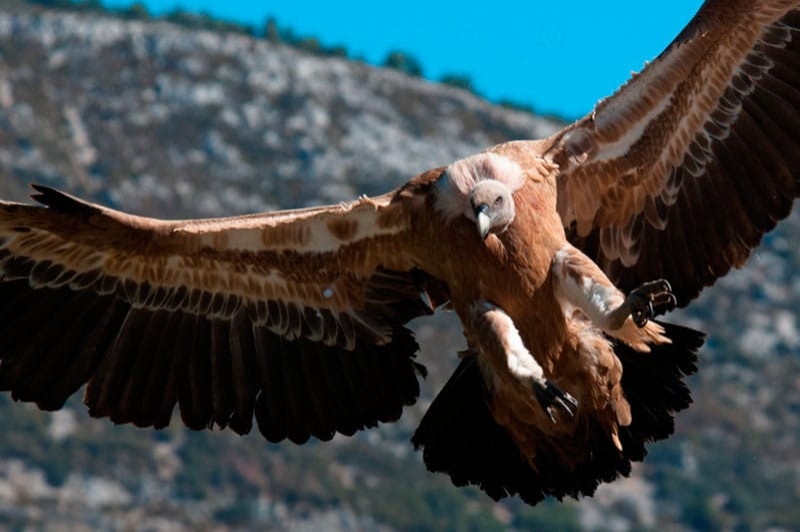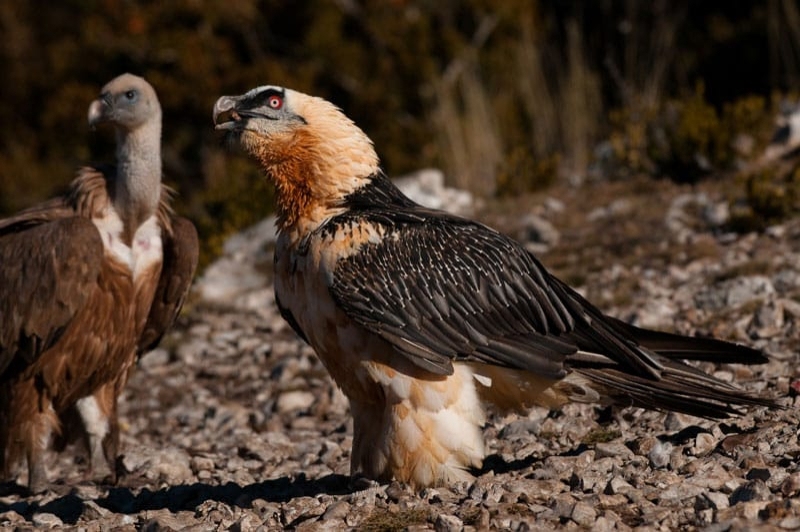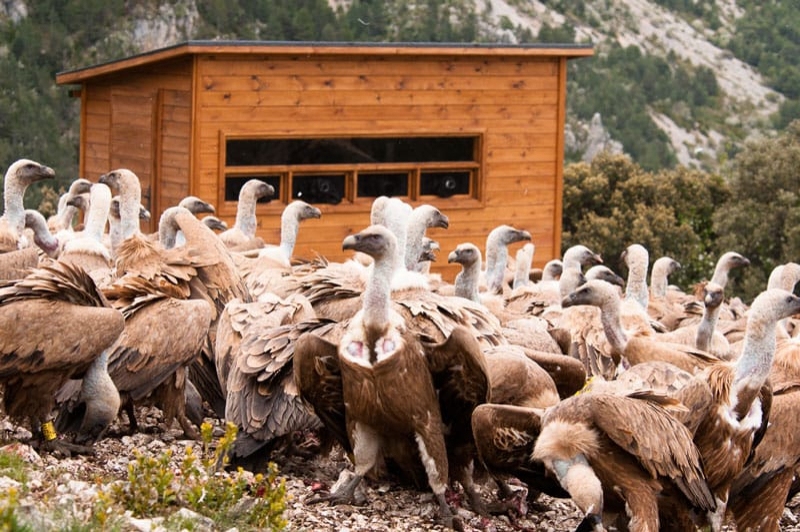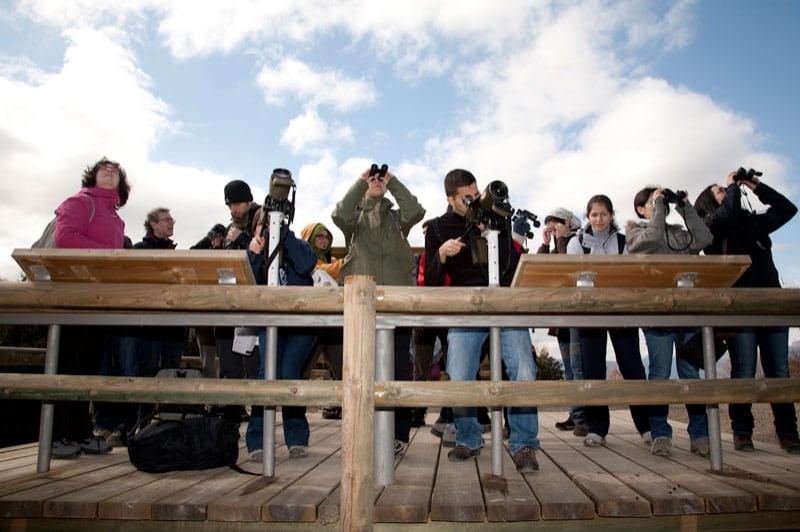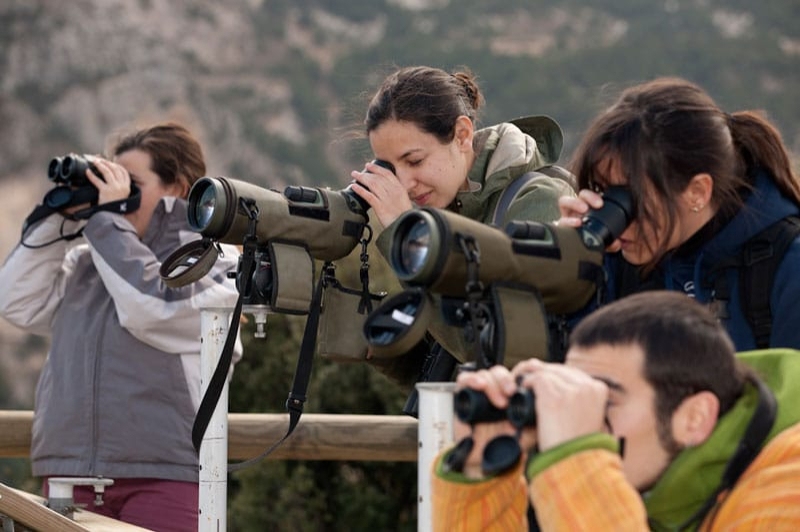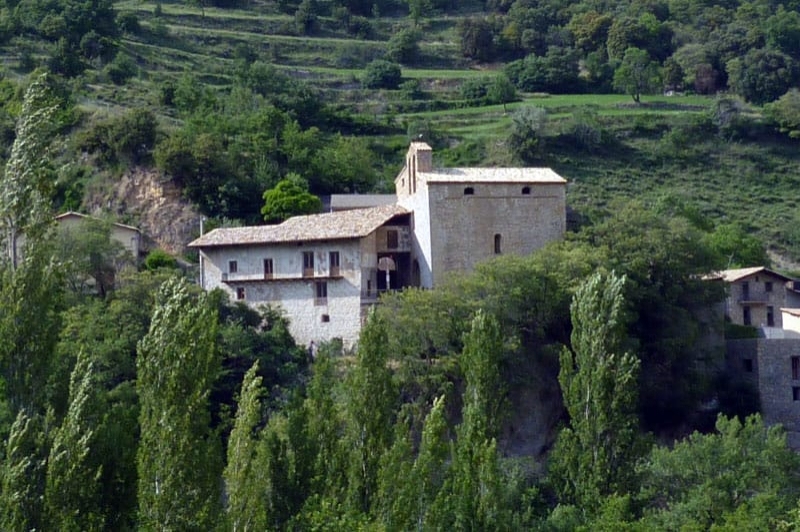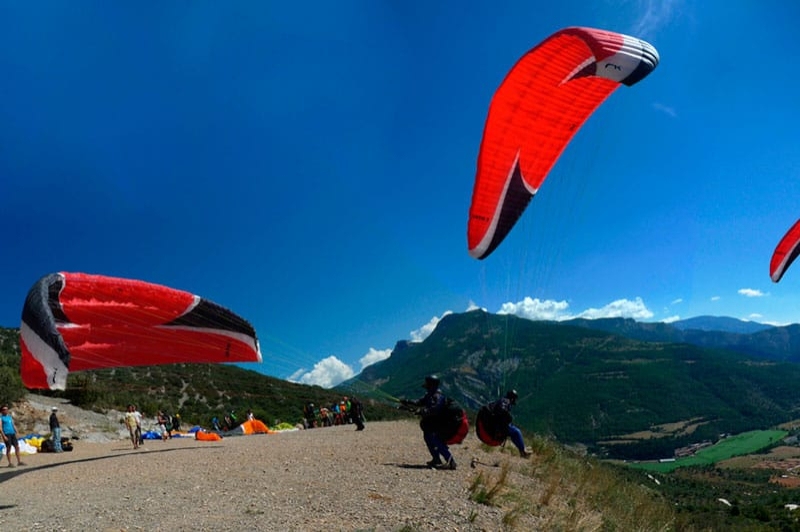Espai Natura Muntanya d’Alinyà Fígols i Alinyà
A magnificent setting and refuge for emblematic species such as the chamois or the capercaillie, Espai Natura Muntanya d'Alinyà is located in the Catalan Pre-Pyrenees, the only region in Europe where the four species of vultures that live on the Old Continent nest and are easily observed: common vulture, bearded vulture, Franciscan vulture and Egyptian vulture.
Between the Sierra del Cadí and the Segre River, the Espai Natura Muntanya d'Alinyà is the largest private estate in Catalonia. Its more than 5,000 ha, between 500 and 2,380 m high, and its rugged relief give it a superlative diversity of environments. Pastures, rivers, forests, peaks, cliffs and crags form a set of exceptional ecological and landscape richness, where the great Pyrenean fauna lives in harmony with the local population.
Next to the Alinyà church is the Mountain visitor center that houses a farm shop specializing in products from the area as well as an exhibition space on the most significant aspects of the valley. La Rectoria (Visitor Center-Agrotienda): open every Saturday, Sunday, public holiday and throughout August from 10 am to 2 pm and from 4 pm to 6 pm. Don't miss it! Come discover the surprising secrets of the Living Mountain.
On the Alinyà mountain you can also take guided outings to get up close to a black vulture, an Egyptian vulture or a bearded vulture. These activities, a unique offer in all of Catalonia, which combine various aspects such as hiking, the landscape, observation and knowledge, aim to disseminate and raise awareness about carrion birds and with the enhancement of natural heritage as an asset for development. local economy of the Pyrenean counties.
You can't miss...
The rectory. Next to the Alinyà church, this Alinyà mountain visitor center is open, which houses a farm shop specializing in products from the area, as well as an exhibition space on the most significant aspects of the valley.
The lookout of the vultures. Viewpoint directed towards the area where common and black vultures are usually found in the valley. Bearded vultures and Egyptian vultures can also be seen, as well as the golden eagle, crows, kites and other birds of prey.
The views from Santa Pelaia. From this Romanesque hermitage, located at an altitude of 1,262 metres, magnificent views of the valley are obtained. From there you have a good view of the Pena rock (1,921 m), which is the most characteristic geological formation (a perfect anticline) of the Alinyà mountain. In the hermitage of Santa Pelaia, a crowded meeting is held on the Saturday before the second Easter, with residents from all the villages of the valley and from Oliana, Fígols and Organyà.
The survival of rural life. The inhabitants of the Alinyà mountain have maintained the traditional mountain activities of this area, such as extensive cattle and sheep farming and potato crops from the buffet, a highly appreciated variety that is grown in high altitude fields and is locally they call trumpets. These activities are perfectly compatible with conservation objectives, and must be preserved and promoted.
The sources. Always linked to agricultural, livestock and forestry activities, and places of rest for hikers, the fountains represent a valuable element. The Alinyà mountain has two important springs with an abundant and sustained flow: the Aiguaneix spring and the Codonyes spring.
The visit through the seasons
A Alinyà summer can be dry and very hot, and a little cooler in height, and the mountain is full of young birds born during the spring. It is also the time when chamois can be observed, with the little ones that have recently been born.
In autumn the oaks, poplars and ash trees turn yellow, the leaves turn brownish and wait for the onslaught of the wind to make them fall. The chamois begin the reproductive ritual again. It is also the most agriculturally intense period of the year, when potatoes are harvested and stored buried in the ground until the next year.
With the arrival of the cold and the first snowfalls of winter, the vegetation goes dormant and the bearded vulture begins to lay. It is also the time when insects disappear and part of the birds that have nested in the mountains move to other more benign climates.
Spring arrives early in the valleys and advances with the altitude, covering the meadows and pastures with flowers. Rain and melting ice cause streams to go down full. It is also the period when oaks and other deciduous trees begin to regrow and the time when most animals begin to reproduce. Among them stands out the capercaillie, which makes the nuptial stop in the semi-darkness of the subalpine forests.
Did you know...
The wealth of natural resources, such as forests and pastures, has long provided a favorable environment for human communities, which have inhabited this territory since prehistory, about 4,500 years ago.
The PAS (supplementary feeding points) of the reserve are the first in Europe to feed the four vultures of the continent: the Egyptian vulture, the griffon vulture, the black vulture and the bearded vulture.
The half-buried dry stone constructions that you will find in various places in the valley are called " trumfos holes", and are intended for the conservation and storage of potatoes, especially the buffet variety. They are circular, excavated, with walls and a vault. It is made of stone, is covered with earth and engulfed, and is accessed through a single opening at ground level, just enough for a person lying down to pass through. The average capacity of the holes is equivalent to about seventy sacks of potatoes. We find them located in the same crop fields, and on the Alinyà mountain we can see hundreds.
Activities for schools and institutes
The Alinyà mountain, a magnificent setting and refuge for emblematic species such as the chamois or the capercaillie, is located in the Catalan Pre-Pyrenees, the only region in Europe where the four species of vultures that live in the Old Continent can be observed with some ease: griffon vulture, bearded vulture, black vulture and Egyptian vulture.
Departing from Alinyà, led by a wildlife guide-technical and along a historic path, you reach the Els Voltors viewpoint (excursion of about 45-60'). There we observe with telescopes how the vultures feed, how they interact and how they fly over the viewpoint.
An educational dossier will help us understand their ecological importance and the benefits they bring to society.
Activity adapted to middle and higher cycles of primary education, ESO , baccalaureate and training cycles. Also offered in English.
Nearby routes
See all routes »- Tozal of Cambrils (a 4.6 km)
- The Salt River (a 4.6 km)
- GR1 route through Odèn, from Canalda… (a 4.6 km)
- Tour of Canalda, in Odèn (a 4.6 km)
- Route of the trades in the Alt Urgell (a 9.8 km)

